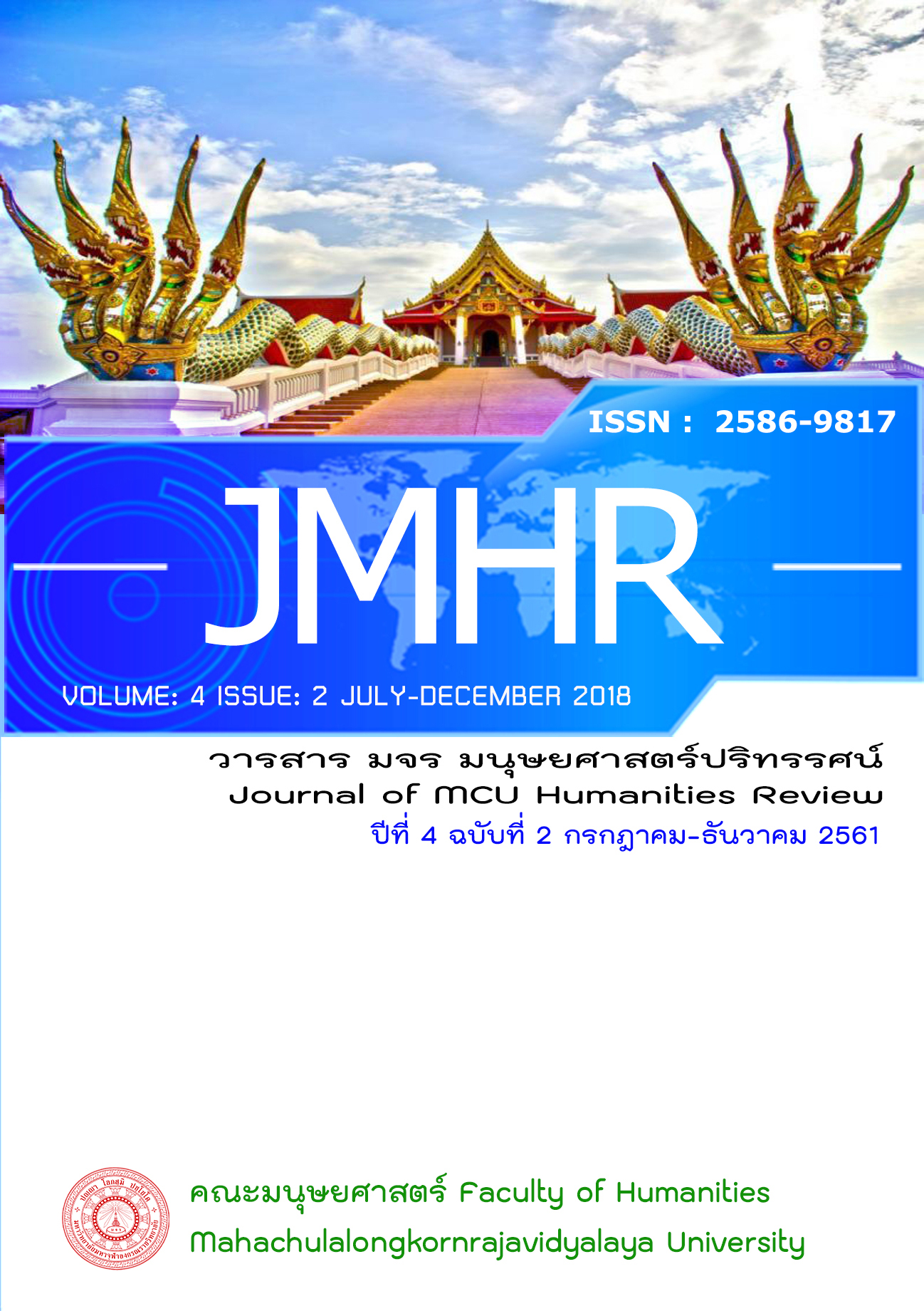การพัฒนาสำนักปฏิบัติธรรมตามหลักสัปปายะในพระพุทธศาสนา ของวัดสันก้างปลา อำเภอสันกำแพง จังหวัดเชียงใหม่
คำสำคัญ:
การพัฒนาสำนักปฏิบัติธรรม, หลักสัปปายะในพระพุทธศาสนาบทคัดย่อ
บทความวิจัยครั้งนี้มีวัตถุประสงค์ ๓ คือ ๑)เพื่อศึกษาแนวคิดและหลักสัปปายะ ในพระพุทธศาสนา ๒) เพื่อศึกษาการจัดการสำนักปฏิบัติธรรมในประเทศไทย ๓) เพื่อศึกษาวิเคราะห์ การพัฒนาสำนักปฏิบัติธรรมตามหลักสัปปายะ ในพระพุทธศาสนาของวัดสันก้างปลา การวิจัยครั้งนี้เน้นการวิจัยเชิงคุณภาพ ได้ศึกษาค้นคว้าจากเอกสารและการสัมภาษณ์ เชิงลึกลงพื้นที่ภาคสนามและเก็บรวบรวมข้อมูลโดยการสัมภาษณ์เชิงลึกผู้รู้ บุคลากรภายในวัด พระวิปัสนาจารย์ ผู้ให้การอุปถัมภ์และสนับสนุนวัดสันก้างปลาตั้งแต่เริ่มต้น ผู้เข้าร่วมปฏิบัติธรรมเป็นประจำไม่ต่ำกว่า ๕ ปี ผลวิจัยพบว่า วัดสันก้างปลา เป็นสำนักปฏิบัติธรรมที่เพียบพร้อมด้วยความเป็นสัปปายะเหมาะแก่การศึกษาอบรมปฏิบัติธรรม สอดคล้องกันกับองค์ประกอบของการฝึกอบรมปฏิบัติสมถวิปัสสนากัมมัฏฐาน ๕ ประการ กล่าวคือ มีสถานที่ของสำนักปฏิบัติธรรมเหมาะสมแก่การปฏิบัติ หลักสูตรการอบรมดี วิทยากรมีคุณวุฒิ มีความรู้และมีประสบการณ์ การบริหารกิจกรรมของสำนักปฏิบัติธรรมเป็นระบบ เจ้าอาวาสเอาใจใส่ ผู้เข้ารับการปฏิบัติธรรมมีความตั้งใจ
เอกสารอ้างอิง
(๑) หนังสือ
กองพุทธศาสนศึกษา สำนักงานพระพุทธศาสนาแห่งชาติ. สำนักปฏิบัติธรรมดีเดน ๔๕ สำนัก พุทธศักราช
๒๕๕๔. (กรุงเทพมหานคร: โรงพิมพ์สำนักงานพระพุทธศาสนาแห่งชาติ, ๒๕๕๔).
อมร รักษาสัตย์. การพัฒนานโยบาย. (กรุงเทพมหานคร : คณะรัฐประศาสนศาสตร์ : สถาบัน บัณฑิตพัฒน
บริหารศาสตร์, ๒๕๒๔).






